Mobility Matters—September 2025
This newsletter highlights recent projects, partnerships, and publications related to NREL's transportation and mobility research.
Subscribe to receive this newsletter via email.
In This Edition
Innovation Pushes Our Energy Future to New Heights
Since our founding nearly 50 years ago, NREL has never stopped pushing world-class research forward and differentiating ourselves from the rest by taking a uniquely whole-system, integrated approach. We innovate—it's in our DNA.

Photo from Getty Images
Our drive to deliver energy solutions reaches across sectors, industries, governments, and communities. Case in point: A new NREL-developed silicon carbide power module—ultra efficient, low cost, and the world's fastest—is a promising solution to rising energy demands for data centers, manufacturing, transportation, and more. We're using our state-of-the-art battery imaging equipment to help strengthen domestic battery material supply chains by helping battery recyclers recover and refurbish high-quality materials that maximize battery performance. We're even partnering with NASA to evaluate how airports could build resilience to support ever growing airport energy needs.
This spirit of innovation is a key driver of American economic growth. It makes us competitive on the global stage while simultaneously increasing our national resilience. Most importantly, it pushes science and technology to ever greater heights, bringing us closer to a secure, affordable, and energy-independent future for all.
Drive on,

Chris Gearhart
Director, NREL's Center for Integrated Mobility Sciences
Subscriber Profile Update
We'd like to learn more about who reads Mobility Matters so we can make sure we're sharing relevant content. Take a second to update your subscriber profile and let us know your industry/organization type.
If you are not yet a subscriber, this is your opportunity to sign up!
Research News Highlights
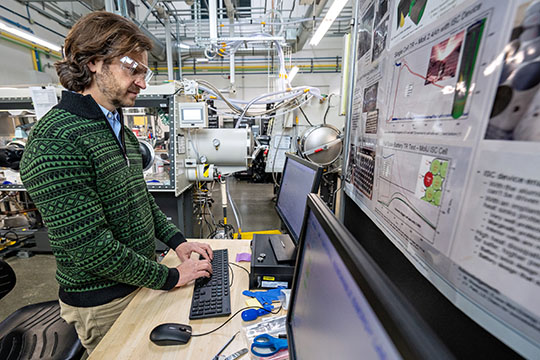
Artificial Intelligence Models Improve Efficiency of Battery Diagnostics
NREL's groundbreaking physics-informed neural network (PINN) model can predict lithium-ion battery health nearly 1,000 times faster than traditional models. PINN replaces the traditional, resource-intensive battery physics model with a powerful artificial intelligence approach that mimics the interconnected neurons of our brains to analyze nonlinear, complex datasets. This deep-learning process can enhance battery health diagnostics by quantifying physical degradation mechanisms and pave the way for more efficient, scalable approaches to manage battery aging.
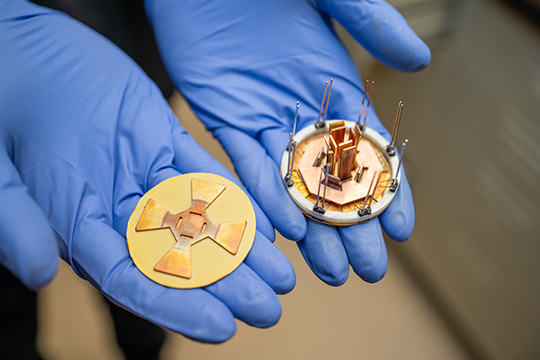
NREL's Ultra-Efficient Power Module Is an Answer to Surging Energy Demands
The United States' power consumption is poised to reach record highs in coming years. One solution to surging energy demands? Getting more energy out of the electricity we already produce, at a lower cost. NREL has now unveiled its Ultra-Low Inductance Smart power module, nicknamed ULIS—the world's fastest, ultra-efficient, low-cost silicon carbide power module. ULIS is so efficient that it can "squeeze" more usable power out of the electricity supply, making it a promising solution to rising energy demands for data centers, manufacturing, transportation, and more.

Beyond Flights: Airports Could Bolster Grid Security and Adaptability
NREL and NASA are evaluating how airports could build resilience by generating on-site power to support ever growing airport energy needs. The research team is modeling the electric load profiles of two regional airports to understand their energy needs now and how they could reliably respond to future loads. The project will use NREL’s Advanced Research on Integrated Energy Systems (ARIES) platform to show how utility components handle large loads and surprise disruptions, as well as how they might be configured for local energy backup.
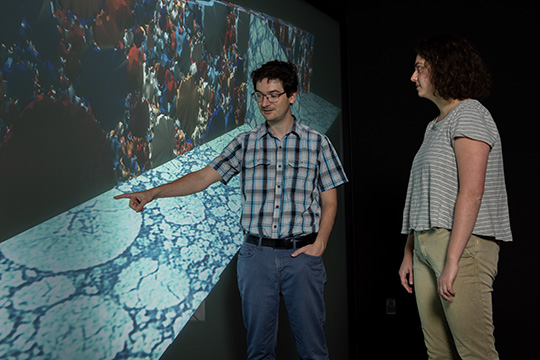
A Deeper Look at Hidden Damage: Imaging Maps Internal Battery Degradation
Direct recycling of battery cathodes within the United States offers an opportunity to strengthen domestic battery supply chains and extend the lifespan of critical materials. Direct recycling is more efficient than traditional methods and could preserve and refurbish battery components. To optimize this process and ensure recovered materials are high quality, NREL researchers are using the laboratory's state-of-the-art X-ray nanoscale computed tomography (nano-CT) scanner to reveal hidden flaws that impact the quality of materials recovered for recycling.
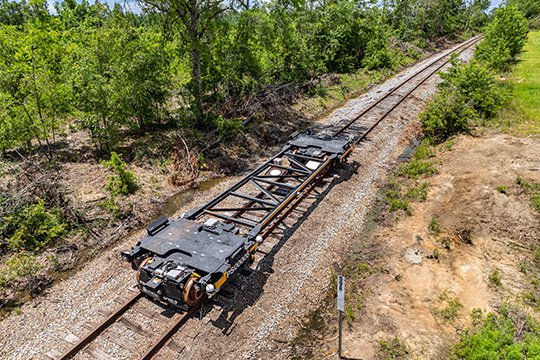
Optimizing Freight Train Logistics Can Slash Container Delivery Times by Nearly 70%
Trucks have dominated short-haul deliveries for decades—largely because freight trains lack their speed and flexibility, though they win in cost and energy savings. In a bid to bring miles back to railroads, NREL researchers used the Advanced Locomotive Technology and Rail Infrastructure Optimization System (ALTRIOS) and ALTRIOS-LIFTS tools to create an optimized dispatching strategy for Parallel Systems' next-generation railcars. That strategy could help the rail manufacturer reduce container delivery times by nearly 70%, helping smaller railroads meaningfully compete with the trucking industry for short-haul deliveries.
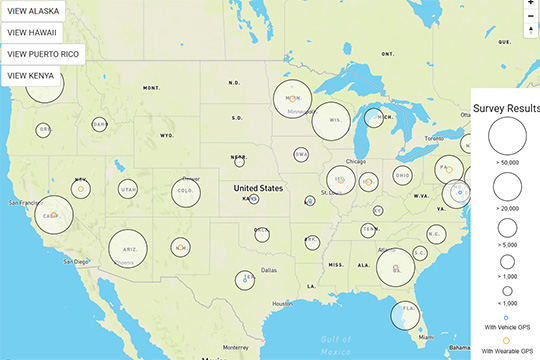
15 Years and Counting: A Unique Solution for Transportation Data Sharing
Now 15 years old, NREL’s Transportation Secure Data Center continues to increase access to travel and transit surveys and studies from municipalities, transit agencies, and other entities that want to share their results while protecting participant privacy. It has accrued more than 5,000 registered users from universities, automakers, governmental organizations, nonprofits, national laboratories, and other arenas. In addition to household travel data, the transit data section, added in 2023, expands the variety of offerings found on the platform.
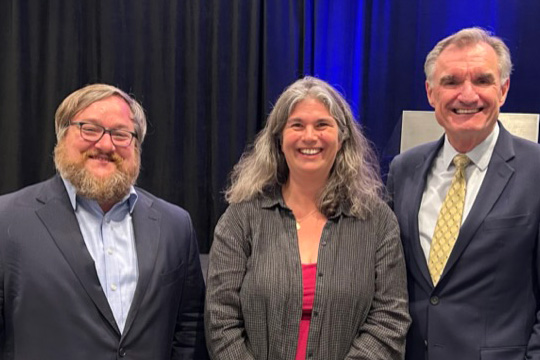
Multiple NREL Transportation Researchers Recognized at 2025 Vehicle Technologies Office Annual Merit Reviews
NREL transportation researchers and research teams received awards at the 2025 Annual Merit Review meeting for the U.S. Department of Energy's Vehicle Technologies Office (VTO). Congratulations to Margo Melendez, recipient of a VTO Lifetime Distinguished Achievement Award; the NREL teams that developed RouteE: Route Energy Prediction modeling tools and FASTSim™: Future Automotive Systems Technology Simulator; and the NREL researchers who participated in multilab cooperative driving automation projects.
Get To Know Our Team: Andrew Duvall
A conversation with Andrew Duvall, who leads NREL's Mobility Innovations team

What does your work focus on?
My work focuses on developing a greater understanding of how people respond to emerging mobility technologies and practices. With the rapid proliferation of innovative mobility options, this is an exciting time to explore how people view and choose new modes to meet their daily mobility needs. Much of my recent work has centered on micromobility and vehicle systems automation, coupled with investigating mobility needs and challenges in various settings, especially rural and small communities.
What single mobility challenge would you say we need to prioritize in the next 5 years?
As a society, we appear to be on the edge of fundamental changes in how we interact with technology, which inevitably affects our mobility. Catalyzed by the commercialization of artificial intelligence and integrated information/communication systems—such as smartphones, Bluetooth, GPS, roadway sensors, etc.—how we access locations, goods, employment, and services could dramatically change in the near future. The biggest challenge will be to ensure mobility improvements are easy to use and beneficial for everyone.
Can you share a defining moment in your research career?
I saw some of my research findings implemented within an emerging mode in near real time as I advised on the design and deployment of Denver B-Cycle, which launched in 2010 as the first large-scale bike-share system in the United States. Although this program has ended, my associated work has gone on to inform many of today’s shared micromobility programs across the country.
What piece of research are you most proud of conducting?
I am particularly proud of my team’s interdisciplinary research focused on developing methods and metrics to assess the benefits and challenges of emerging mobility options. As a social scientist working alongside primarily engineering colleagues, it is especially meaningful to me that they trust me as a leader and value the integration of a wide range of research methods in our pursuit of ambitious mobility goals.
Must Reads
NREL Report Explores the Logistics of Aviation Fuel Blending
The aviation industry is considering how to safely and cost-effectively implement use of jet fuels, especially SAF. SAF must be blended with petroleum-based jet fuel prior to its use in aircraft, and the related quality standards and certifications are the primary drivers determining where this blending should occur. A report from NREL advanced aviation researchers examines several locations—terminals, airports, refineries, and greenfield/brownfield sites—and proposes that terminals may be the optimal location for blending.
Scientists Model Complex Battery Behavior To Improve Function and Stability
Lithium-ion batteries continue to evolve to meet the needs of advancing highly efficient technologies. The cathode-electrolyte interphase (CEI) is crucial to the performance, durability, and density of these batteries, but the behavior of the CEI is not well understood. New research analyzed a manganese-based cathode chemistry to understand how its degradation impacts the CEI's behavior, which could inform new developments in battery cathode design. Read more in Unveiling the Mechanism of Mn Dissolution Through a Dynamic Cathode-Electrolyte Interphase on LiMn2O4, Advanced Energy Materials.
New Fact Sheet Details Impacts of Energy Technology Innovation Partnership Project
The U.S. Department of Energy's Energy Technology Innovation Partnership Project (ETIPP) helps coastal, remote, and island communities increase their security through energy planning and deep-dive technical assistance. A new ETIPP fact sheet breaks down how the program works and highlights how it leverages the expertise of an extensive partner network, including NREL and other national laboratories, to support communities with their energy resilience needs.
Researchers Identify New Method To Enhance Quality of Recycled Battery Materials
Recycling end-of-life lithium-ion batteries is necessary to meet future demand for critical materials. Current major battery recycling methods have limited efficiency and high cost and can generate toxic waste. Direct recycling, however, is more appealing, preserving battery materials while just replenishing the lost lithium ions. But it can sometimes introduce contaminants and continued degradation. New research proposes a new preprocessing step to improve the efficiency of relithiation of end-of-life batteries. Read more in Addressing Inherent Challenges to Chemical Relithiation of Cycled End-of-Life Cathode Materials, Advanced Energy Materials
In the News
Researchers Make Incredible Discovery That Could Transform EV Batteries: 'Would Also Keep More Valuable Metals Inside the United States'
The Cool Down interviews NREL's Donal Finegan
NREL's high-resolution nano-CT system is helping researchers study how batteries degrade to discover new methods to refurbish them more efficiently and avoid needing to build new ones with virgin critical materials.
NREL Researchers Develop AI Models To Improve Battery Diagnostics
Charged: Electric Vehicles Magazine interviews NREL's Kandler Smith
NREL's new PINN model can predict battery health nearly 1,000 faster than traditional models. It reduces the computational power required to analyze battery health, which could open doors for scalable battery aging analysis techniques and adapt to future battery designs and usage.
Share
Last Updated Sept. 24, 2025
